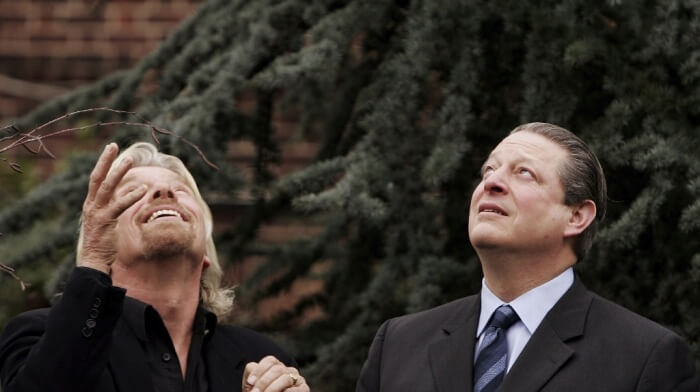Millennials are misunderstood - and by the way many of them hate the label - so how can you make a young workforce engaged and productive?
Think You Know How To Manage Millennial Workers? Think Again
Millennials are misunderstood - and by the way many of them hate the label - so how can you make a young workforce engaged and productive?

If there was ever a demographic that captured the zeitgeist of an ever-changing workplace, it is that of the ‘millennial’. Accused of being entitled and self-interested, whilst also demanding instant gratification and being difficult to manage - this is a generation of workers that gets a lot of bad press.
Such is the seemingly incessant berating they receive, it would be hard not to feel a degree of empathy for these young people trying to build a career. Many of them don’t even want to be associated with the term ‘millennial’ – simply due to the negatives associated with it.
It is also unclear whether the noise about millennials is even justified or simply a case of generation envy – encapsulated by those who enjoy bemoaning the ‘kids of today’. Despite this, perhaps there is some truth in the stereotypes.
Whichever viewpoint is taken, what is inescapable is the fact that millennials are largely misunderstood by those whose job it is to lead them. Their role in the modern workforce and the future of work itself, however, cannot be underestimated.
“A case of generation envy – those on the other side of 40 who like to bemoan the ‘kids of today’?”
PwC estimates that by 2020, millennials (the generation born after 1980) will make up 50% of the global workforce, with that number rising to a staggering 75% by 2030, according to the US Bureau of Labor Statistics.
While it would be a risky proposition to generalise an entire demographic, it is universally acknowledged that millennials do possess characteristics and motivations that differ to their predecessors when it comes to the workplace.
Understanding these subtle differences will enable business leaders and managers to get the best from their millennial employees.
Speaking the same language
Freshminds recently conducted a survey ranging from entry level and middle management to senior and C-suite executives. We asked, “What do you think is the most effective leadership style to motivate graduate employees and early careerists?”
Accordingly, two-fifths (40.2%) of respondents said that they found the ‘Transformational’ style of leadership to be the most effective. Transformational leadership is defined as leaders who engage, challenge and inspire their teams, whilst advocating and influencing change to meet current and future challenges.
Taking Richard Branson, founder of The Virgin Group, as a case in point, he represents a classic example of a transformational leader.
He is quoted as saying, “If you can motivate your people, use their creative potential, you can get through the bad times and enjoy the good times together… if your employees are happy and smiling and enjoying their work, they will perform well.”

Sir Richard Branson knows how to keep things interesting
Finding inspiration
The likes of Branson et al are rare breeds. The ability to inspire and transform employee performance, however, is not exclusive. Millennials, more than any generation before them, are driven by purpose and values. They don’t work hard just to pick up their paycheck at the end of each month - they do it because of a sense of meaning and it being the right thing to do.
“Millennials, more than any generation before them, are driven by purpose and values.”
Organisations are increasingly vying with one another to gain a competitive edge - not just in the markets they operate, but also in terms of attracting, engaging and retaining the talent they need to help them achieve their goals.
To do so means building winning teams, breaking down barriers, celebrating and rewarding successes, and identifying and developing those with the greatest potential within the organisation.
While the transformational leadership style may be the preferred approach for the majority of younger workers, it isn’t the only one. More than a third (36.5%) of those surveyed said they favoured a democratic style of leadership – one that sees leaders encourage open communication and employee participation.
This was followed by 1 in ten (9.5%) of all respondents stating that they see Autocratic leaders as being the most effective in motivating junior employees.
Of those, 35.4% hold a director-level position or above, while 8.3% hold an entry-level position. Just 1.8% of middle managers favoured this style of leadership.
Top-down management alienates younger workers
These results are significant in that they highlight a marked contrast between different generational groups.
Indeed, it is estimated that the average age of a director or C-suite executive is between 57-59 years old – a generation of leaders who very much embody a leadership style that believes in having a clearly defined chain of command and places all control and decision-making firmly in their hands - with no involvement from other key stakeholders in the business.

Time to do away with old hierarchies?
This top-down military style and rigid approach doesn’t sit well with the overwhelming majority of junior workers.
Nor is it very effective in the modern workplace - an environment that is often fast-paced and where change is not seen as a threat, but an opportunity. Junior workers or millennials, whichever term of reference is favoured, embody a marked shift that is taking place in the workplace.
They are driven by the desire to make a real difference for themselves, their colleagues and the organisation they work for.
There is a danger of overstating the differences between generations, and equally overstating the familiarities. Equally risky is second-guessing how well-prepared millennials are for the workplace, and how ready the workplace is for them.
What is clear is that each generation tries to prove themselves in a different. For each stereotype, there is an exception and a style of leadership that sits better than others.
The key takeaway for leaders is this: by adopting a transformational style of leadership within your organisations, you will make significant strides in creating better-engaged and more productive teams. This in turn will positively impact the bottom line and that can only be a good thing.
Thanks for signing up to Minutehack alerts.
Brilliant editorials heading your way soon.
Okay, Thanks!


